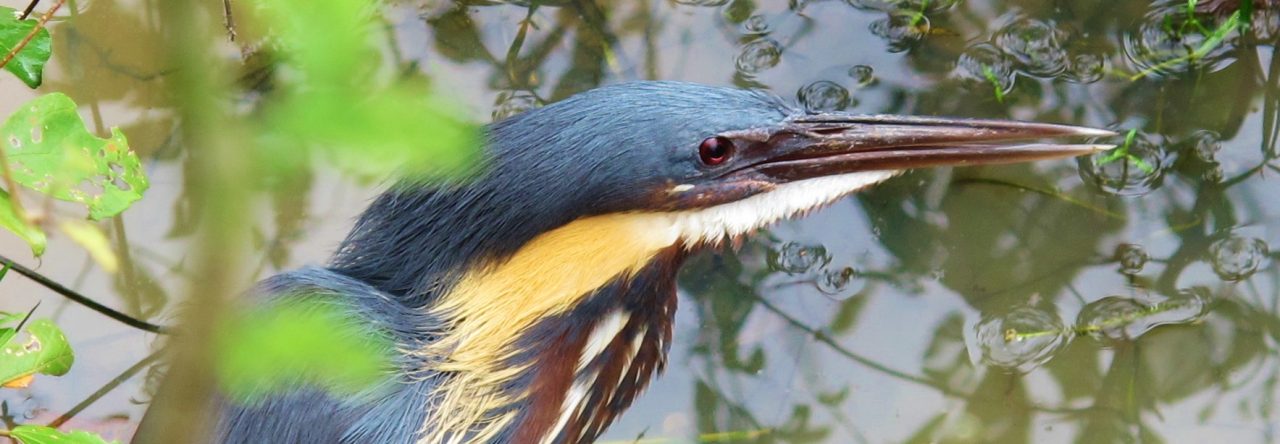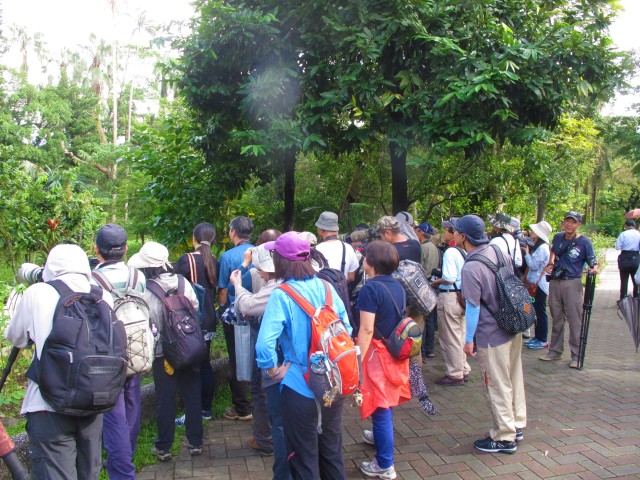

With just a few weeks left of my second stay in Taiwan, and with the weather cooling off nicely over the last couple of weeks, I decided to take the opportunity for a three-day jaunt to the central mountains in the hope of connecting with some Taiwan endemic birds for the final time. I’ve seen them all before but needed quite a few for my year list, and the mountains are a particularly pleasant place to be at this time of year.
I set off early on Saturday morning, and once out of greater Kaohsiung I plotted a route north along Highway 3, past Tsengwen Reservoir. This road boasts sweeping bends, glorious vistas, and an almost complete absence of four-wheeled vehicles – although motorcycles being driven at high speeds are a common sight. It used to be one of my favorite destinations for a weekend blast on my Kawasaki Ninja, but this time I had to make do with my Kymco Racing King 180, which while “only” a scooter is still a quick and entertaining mode of transportation – I was having so much fun that I almost forgot I was supposed to be looking for birds.

My first year list target was Russet Sparrow in the village of Dapu, halfway along the eastern shore of the reservoir. Dapu is a regular location for this rare and declining species, but today I drew a blank not only here but also at another site for this bird halfway up Alishan. I wonder if they desert their breeding villages in winter and retreat deeper into the countryside. Despite the absence of the sparrow, the area was quite “birdy” and I observed some interesting species including Black Kite, Maroon Oriole and Collared Finchbill.

Pressing on quickly past the Alishan tourist buses, I made a two-hour early afternoon stop at Tataka, some 2,500 meters above sea level at the highest point of the road in Yushan National Park. Golden Parrotbill is the specialty here – in fact it is the only place I have ever seen this bird. Dwarf bamboo is the place to look, but this bird roams widely in big flocks and – like many parrotbills – can be very unpredictable. I didn’t score, but did year tick some of the common high-altitude endemics including White-whiskered Laughingthrush, Collared Bush Robin, and Taiwan Fulvetta. The laughingthrushes can be absurdly tame here, hopping around in the car park scavenging for handouts from the tourists. Less common was a flyover Ashy Woodpigeon, while two soaring Black Eagles gave nice views. I also bumped into a Yellow-throated Marten by the hostel buildings – a nice animal but oh if only it had been a Formosan Black Bear, which is apparently being increasingly encountered in Yushan NP.



I had booked overnight accommodation in Taichung, so I still had a lot of driving to do, and I left Tataka at around 3.00pm for the long descent towards Sun Moon Lake, keeping an eye out for the first 10km for roadside Mikado Pheasant (no joy, as usual). By the time I arrived at my hostel at around 7.45pm, I had driven 430km since setting off from Kaohsiung – beating my previous personal best on a scooter by some 50km.
My utter exhaustion after such a long drive, combined with a poor night’s sleep in a crowded dormitory, meant that I had a “lie-in” (by birding standards!) until 6.00am the following morning. An hour’s drive to the foot of the mountain at Dasyueshan, plus the need for a lengthy 7-11 coffee/breakfast stop, meant that I wasn’t in “birding mode” until around 8.30am. My first stop on the way up the mountain was Km 15, where a rocky stream is a reliable location for Brown Dipper. In what was becoming a theme for the trip so far, I dipped on the Dippers, but I did see Striated Heron, Mountain Hawk Eagle, Besra, and numerous Plumbeous Redstarts on territory in the river, while a Taiwan Hwamei sang but didn’t reveal itself.

Km 23 used to be a completely reliable spot for Swinhoe’s Pheasant, but was oddly completely deserted by humans and birds when I passed, both in the morning and the late afternoon. This being a Sunday, I would have expected there to be crowds of photographers, and the pheasants all over the road doing their best to get run over. Hopeful of bumping into a Swinhoe’s Pheasant elsewhere instead, I pushed on up the mountain, intending to invest several hours at my favorite spot, Forest Road 210. The entrance to this trail is just past the main entrance gate (where the fee for entry is 200NT per person plus 20NT for a scooter). On a right hand bend is a small shrine, next to a wide trail protected by a locked gate and prominent no entry sign. However, birders in the know can nip surreptitiously around the end of the fence, and this is exactly what I did. As it is officially “out of bounds”, this trail is blissfully quiet, quite unlike the circus that the rest of Dasyueshan is on a sunny Sunday.
The highlights along here were many, including a White’s Thrush (of the big, long-billed migrant race), and a second much smaller, shorter-billed individual with more rufous tones in the plumage which could well have been of the resident race (“Scaly Thrush“). Two Eyebrowed Thrushes also showed, but I didn’t find Taiwan Thrush which I was hoping to encounter here and which has showed for me on this trail in the past.
I got my Swinhoe’s Pheasants here – a male and three females feeding quietly along the edge of the trail – satisfyingly “wild” birds, in contrast to the tame individuals I had been expecting to encounter at Km 23. Also of note: two Brambling (part of a big influx to Taiwan so far this autumn), two Spotted Nutcrackers, and a Eurasian Nuthatch.

Probably eclipsing all the bird sightings was a Formosan Serow, which I disturbed at point-blank range. For some inexplicable reason, it chose to turn and stare at me instead of running quickly away, allowing me to fire off some photos of this seldom-encountered endemic mammal:

After exiting the trail and continuing my drive up the road, I soon found myself stopping again for a mixed feeding flock containing two Taiwan Barwings – a welcome year list addition, as they are not the easiest of endemics to find. I pressed on up to the top of the road at Km 50, where the huge numbers of people made me want to beat a hasty retreat. It wasn’t hard to guess where the Black-throated/Red-throated Thrush had been recently showing, judging by the large crowd of photographers, but having very little interest in a confirmed hybrid – especially if getting a sighting might involve a long wait – I opted instead to take a stroll to Tienchih Lake. Along the way, a nice male Taiwan Rosefinch gave good views, while at the summit lake another small group of Brambling showed well, although birds of any kind were greatly outnumbered by hordes of loudly chattering day-tripping humans.


My main target bird for the whole trip was Mikado Pheasant, a bird I had seen only once before, and for just a few seconds, beside the road in Yushan national park. Km 47 at Dasyueshan is undoubtedly the site where birders put in the most effort to connect with this most enigmatic of endemics. Even here, its appearance along the roadside is hard to predict and far from guaranteed – before today I had tried and failed to see it at this spot on at least three previous occasions.
I had been reliably informed that late afternoon is a good time to try, so at 3.30pm I arrived at the site ready to stay until dark if necessary. Just two other birders were present, the clouds had started to close in, the weather was cold and gloomy, and the forest was completely and profoundly silent. I wandered down the road, but returned quickly when the other birders started waving frantically at me. Lurking in the shadows under the pines above the road, there he was: a fine male Mikado Pheasant! I reeled off dozens of photos of the bird standing in the gloom, but I needn’t have worried, as after 20 minutes the pheasant walked right past us and out of the forest, where it proceeded to gobble up the grain that some thoughtful photographers had left at the side of the road.

Calling quietly all the while, he was soon joined by Mrs Mikado, and the two proceeded to pose around the moss-covered stones and logs in an almost perfect imitation of plates in early bird field guides. Allowing us to approach to within six feet, this was a quite ridiculous way to enjoy a stonking bird – probably the toughest Taiwanese endemic to find, and one of the most beautiful to boot.


Thoroughly satisfied with my second and probably final Mikado Pheasant experience, I headed back down the mountain. There was still time before nightfall to call in at Km 15, where two Brown Dippers sang and hopped about on rocks below the bridge as if they had been there all along – although there had been no sign of them during an hour’s search earlier in the day.

After a somewhat better night’s sleep in a now-empty dorm at the hostel, I awoke early to a bright and cool morning. Having had my fill of long drives, I chose to return to Kaohsiung via the most direct coastal route along Highway 17, stopping here and there for birds along the way. Just 5km from my overnight accommodation, Taichung Metropolitan Park proved to be an excellent choice for a visit, producing a year tick (Golden-headed Cisticola), a flock of at least 25 Brambling, and a fine male Daurian Redstart, my personal first of the year in Taiwan.

One of East Asia’s most sought-after birds, Oriental Stork, is resident on a huge river mouth along Taiwan’s west coast (up to six birds are present). This is probably the wildest area along this generally rather developed stretch of coast, and with a lot of ground to cover, I didn’t rate my chances of encountering one. On the other hand, it is hard to imagine a more conspicuous species than an Oriental Stork, a huge black and white bird that favors open country. As luck would have it, I found one within about 15 minutes, predictably extremely distant, year-tickable for sure but I wouldn’t have been very happy with those kinds of views if this bird had been a lifer.
My final stop at Aogu, in Chiayi County, produced little of note except for the common wintering ducks – but I was surprised to discover when I entered my checklist in eBird that the humble Tufted Duck was actually a world year tick for me, bringing my year list to 867 and certainly within reach of my target of 1,000.






